German trainer, rider and educator, Susanne Miesner discusses the vital issue of Connection…
Now I am the last person in the world to be saying that in former years people were riding so much better, but… First of all, they had more time. They were looking for success, but because the whole system of money and expensive horses was not nearly so developed, they were not under such pressure. You rode for success, but not for money.
You can look at all those photos, and look at the necks of those horses. The necks all come stretched out of the wither – look at the top line. And in all those photos you have a horse that trots without breaking the diagonals, or a horse piaffing or passaging, again, with the correct diagonals. All those horses really look in balance. All the horses look upright, they are sitting down behind, and the nose is in front of the vertical. But for me, it is more important to look at the hind legs, they just look natural.
This is a three-year-old horse, just broken in. This for me illustrates connection in a young horse – not self carriage. You first have to have the connection, and the neck can be long – it just depends on the horse’s stage of development. The nose is in front of the vertical, and look how nicely the horse is trotting from behind. This way the horse can balance himself out over the neck.
story continues below the advertisement
When we talk about the right frame, this horse for instance, had a huge canter, and you could say he is a tiny bit too short, but he had such a big canter, that if we had this horse cantering in a longer frame, then he would break up in the back because he doesn’t have the strength – then he would canter in a four-beat, and go on the forehand. What I am trying to illustrate with this picture is that it is very individual how long the nose should be stretched out. What is important is that it is a harmonious relationship between the horse and the rider. This horse shouldn’t be any shorter than this – but at this stage, any longer and the horse would fall about and be unbalanced. This is a very good example of a horse with such good, big movements, that you somehow had to keep it in a certain frame.
Here we have another young horse, and as you can see, this horse has wonderful gaits, really a lot of impulsion. You see how nicely his neck is set on, but he still doesn’t have a lot of muscle, and he is thin in the neck and can easily come behind the vertical. In this picture, the girl has just over-faced the tempo a little bit – it is something that happens to every good rider. His front leg is kicking out so it won’t land flat on the ground, and he will probably bring his foot backwards as it comes to the ground. This often happens – you have to find the right basic speed for every young horse to go into Anlehnung – not even to connection. Because he over faced the trot – the horse is not in balance.
Now, same horse, here she purposely put him round for us – the way you seen nowadays in warm-ups, and you see what happens, the weight gets shifted to the front legs, the hind legs are way more out, and even look at the tail, the horse is tucking his tail in more than in the other photo.
Here she finds a much better speed, a fraction slower, and see what happens, the muscles of the neck come out more. Eventually she will ride this horse into this connection so you have a steady Anlehnung.
What I am trying to say, is that it is really important with young horses to find their right natural tempo, and that this can vary from minute to minute, and day to day. That’s the task of the rider of young horses, to ride the horse into balance, to eventually find the right connection.
Now you are going to see more photos of me, because I don’t like to just show bad photos of someone else, and the good photos of me. I like this horse very much because it is really active from behind, looks happy, he steps beautifully into the bridle. You could say it is a little bit behind the vertical, but I guarantee you it is not, because this photo was taken a little bit from the front. What is important these days is not to take a measuring stick and say, ‘is it perfectly on the vertical?’ What is important, is that the horse comes over his neck, reaching for the bit. This is for me, good connection. This is the whole system in balance.
This is a photo of beginning posting trot. In the very beginning you don’t let the horses stretch out all the way, because having the horse stretched out is a process. There are very few horses you can get on and throw the reins away. First you have to warm up the muscles, warm up the whole system, give the horse a connection through your seat, your legs and your hands, and then eventually you come to where he can go low, but still with a soft connection, and what is really important is that his mouth is at the height of the shoulder joint. I think if a horse comes much lower than that, it will lose its hindleg. It is wrong to ride a horse much lower.
story continues below the advertisement
What is better is this – to stretch much more vertically instead of down where he eats the sand. If you stretch him out vertically, then the horse can pull his back forward and up, and then you will see how nicely the hindleg steps under the centre of gravity.
Now this is a photo of a horse purposely put too short, and the interesting thing is that because this horse was always trained properly when he was here with me – nothing much happens with his hindlegs and his back. If you train your horse properly most of the time, then you have a bad day and things go wrong, it’s not so dramatic if the horse goes a little short for certain moments because there is a basic (base of the training). If the basic comes out of balance for a little while, it’s no big deal as long as you work to ride him correctly eventually. But if you always ride your horse short, then I don’t think it is possible for another rider to get on and give your horse a long neck and he he comes through from behind. The horse that has been wrongly trained can’t cope because his muscles are not properly developed.
This is me on a Trakehner stallion. This horse got three times a nine for trot, and I purposely used this photo because the way he is going here, he would definitely not get a nine! He’s not moving out of the shoulder. At this point in time, maybe he saw something – but whatever, he is too high in the neck for a three-year-old horse. So what he does, is get tense, his shoulder muscles get tense, then you get this artificial trot. The photo shows that even if you get the connection a tiny bit wrong, it will immediately go to the foreleg, or the hindleg.
This is a photo out of The Principles book, and you could say that this hind leg is not swinging through enough, but it is a collected trot, and for me it looks a lot more natural than some of the other hind legs we’ve seen – and what is really nice to see is how the hind leg moves towards the topline of the horse, towards the poll. In a good connection, you need a certain steadiness in the topline – not stiffness, but steadiness. You don’t want your horse with a loose rein, you could never ride an extended trot over a 60 metre diagonal unless you had an elastic rubber band between your horse and you – you really need to have a certain amount of weight in your hand.
Here is a photo where most people say, ‘oh that’s a nice horse!’ But I knew the horse and this photo is just not good enough, because the horse is not stretching enough in his topline out of the wither. This horse is shorter in the front, than in the back. What’s more interesting, is I have another photo taken on the same day. In this picture the horse looks like he is too fat, as if he has a big belly. In the other photo, he looks finer. It’s not because he has lost weight in five minutes, it is because he when drops his back a tiny bit – his belly gets wider, and in the other photo where he has a longer neck, he looks slim.
You can show terrible photos, and everyone goes ‘Yeah I can see that!’ but to see these subtle differences, not so many people can do that.
We need to be very careful not to ruin the natural balance and elasticity in our horses. Riding should be a joy for the rider, but it must be comfortable for the horse – otherwise there can’t be true harmony.
In my opinion, the connection and the frame of the neck, can tell very well what else is going on with the rest of the body. The connection should not be just one criteria of classical training; it is a synonym of the entire training and also indicates the mental stage and welfare of the horse under saddle.

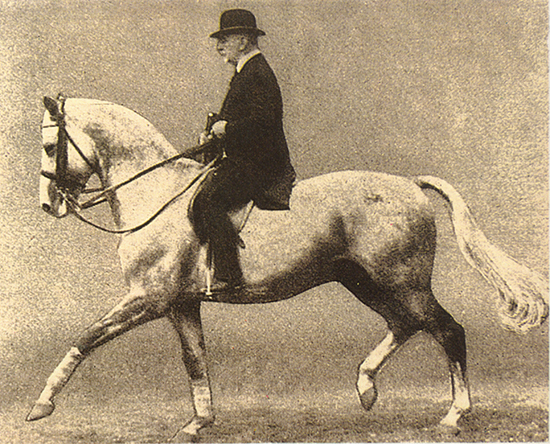
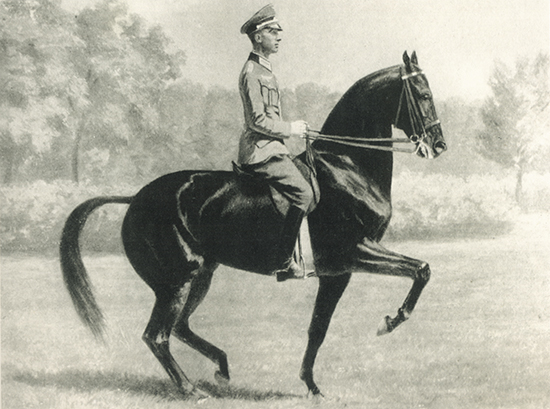
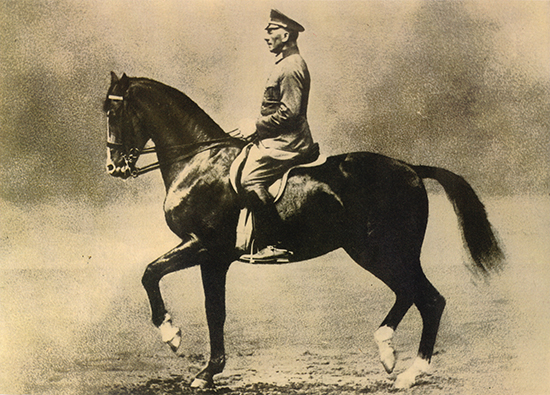
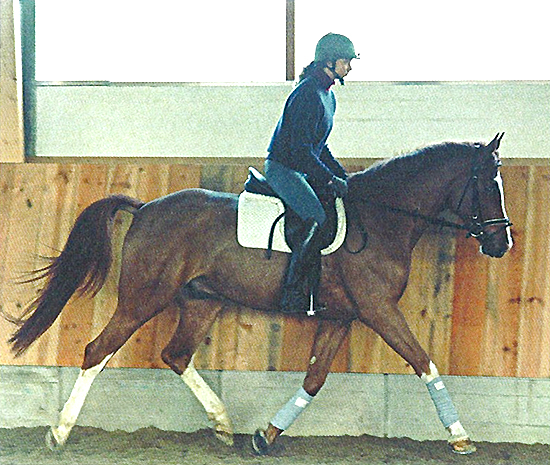
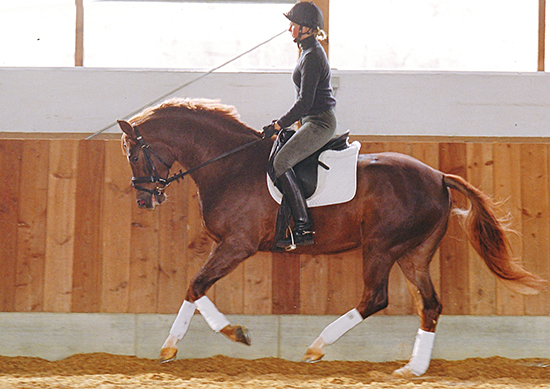
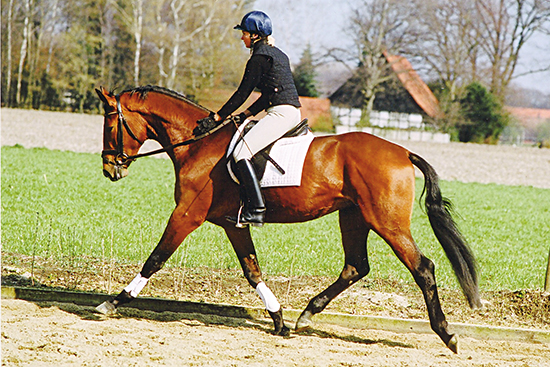
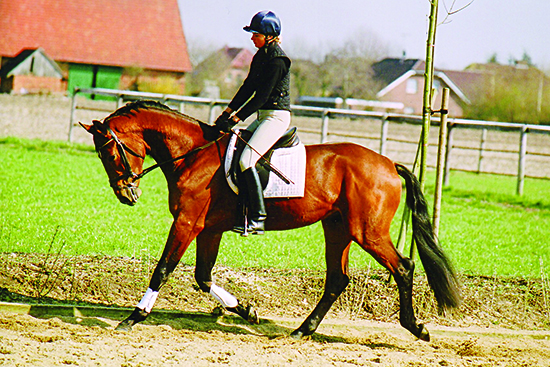
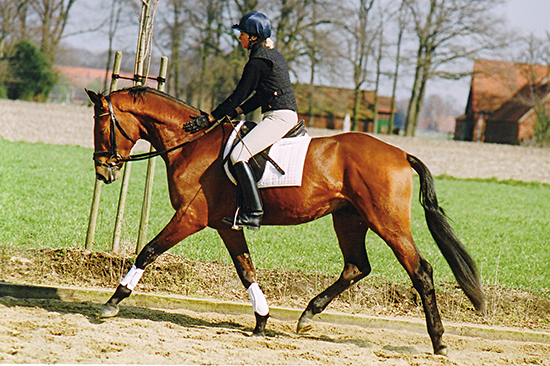
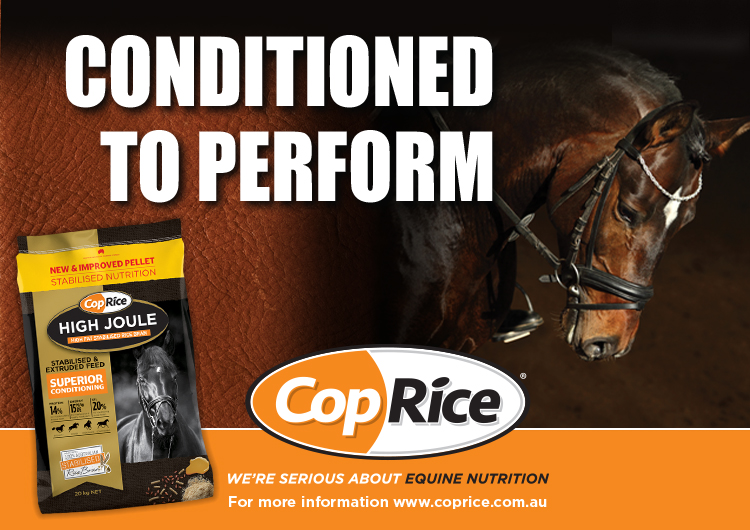
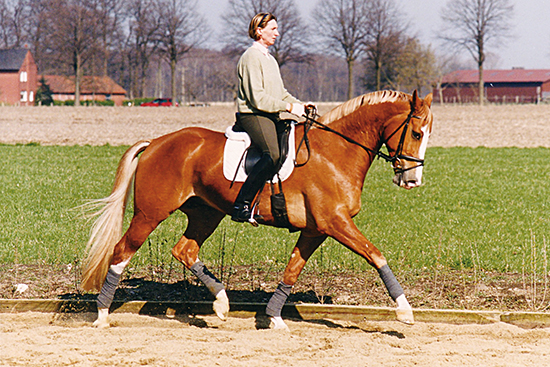
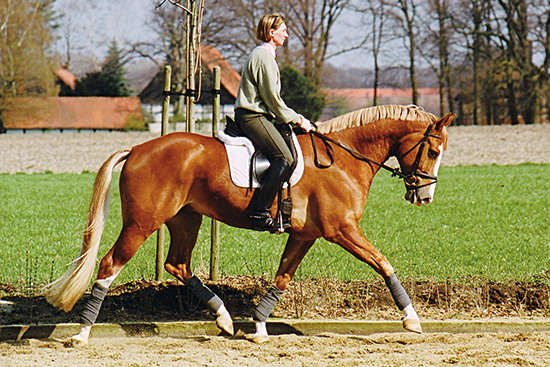
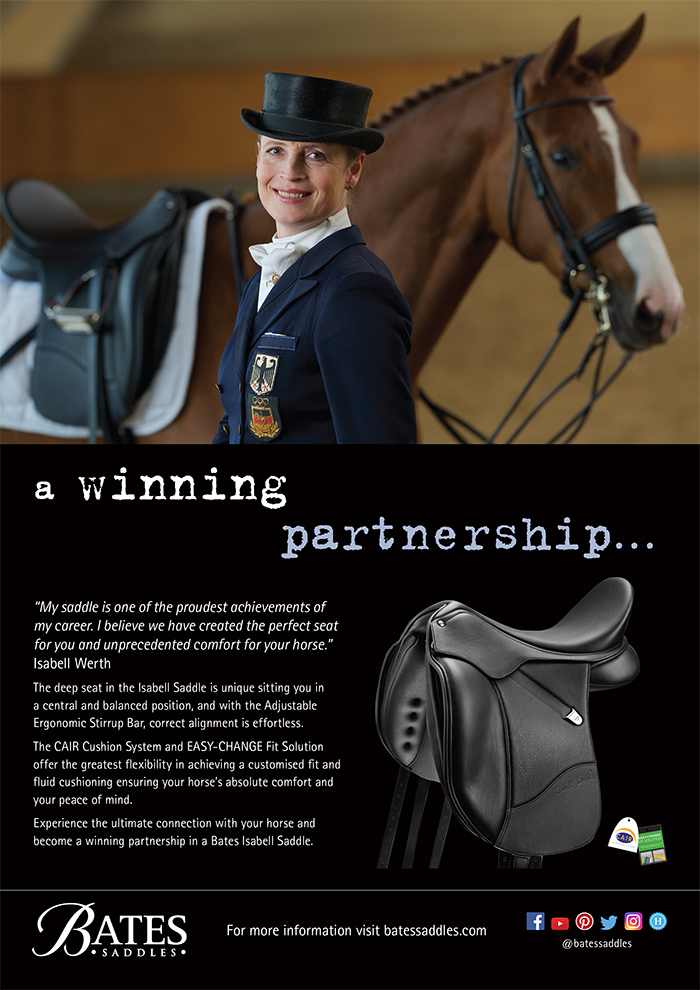
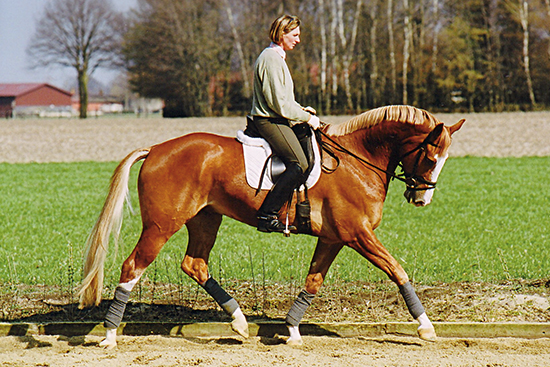
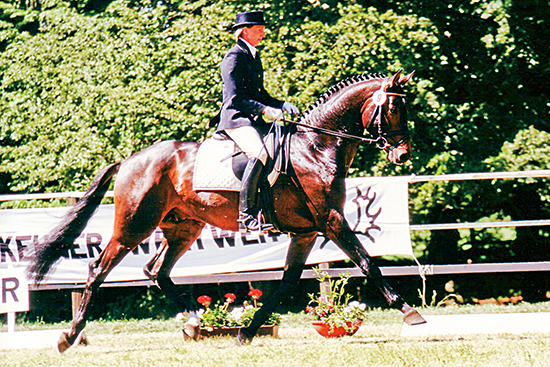

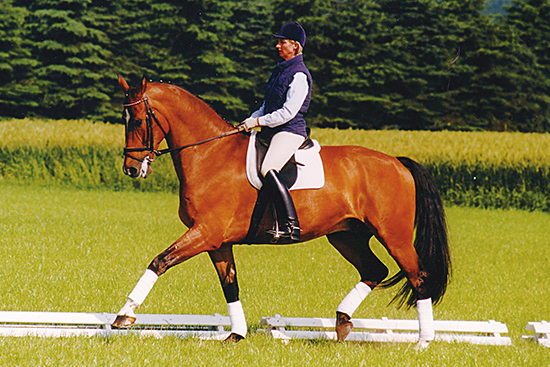
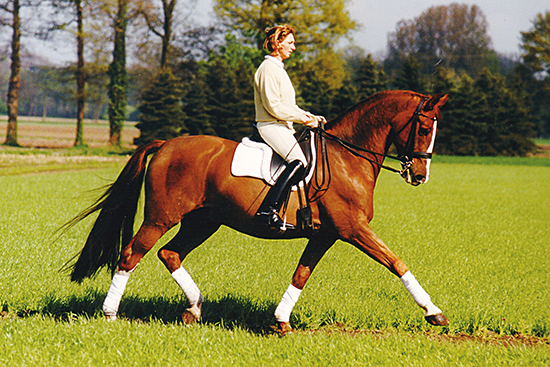
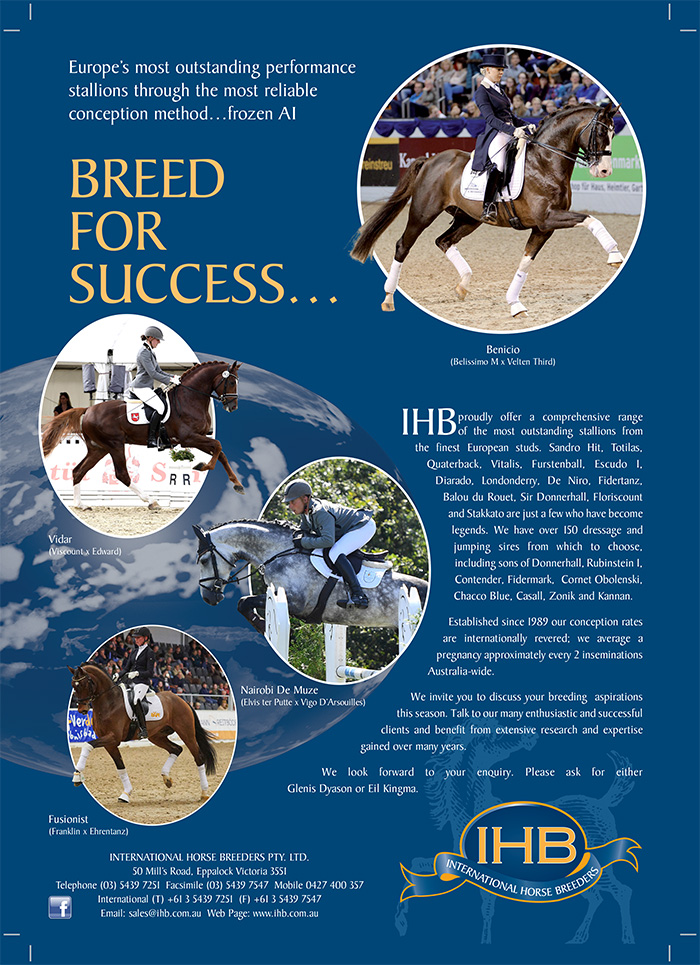
very well shown and described article..thank you very good read
Susanne is a master at getting good contact. It’s a bit of a lost art now, hands dominate everything.